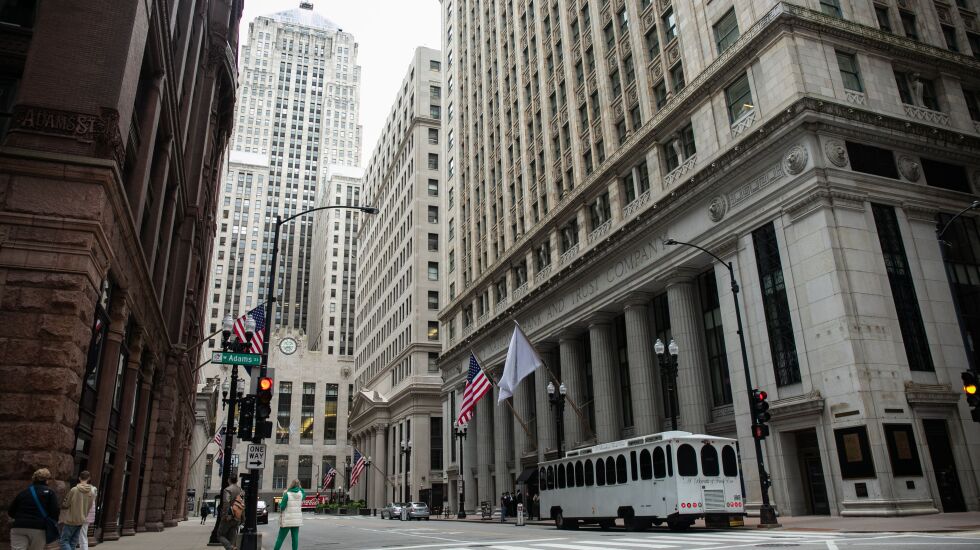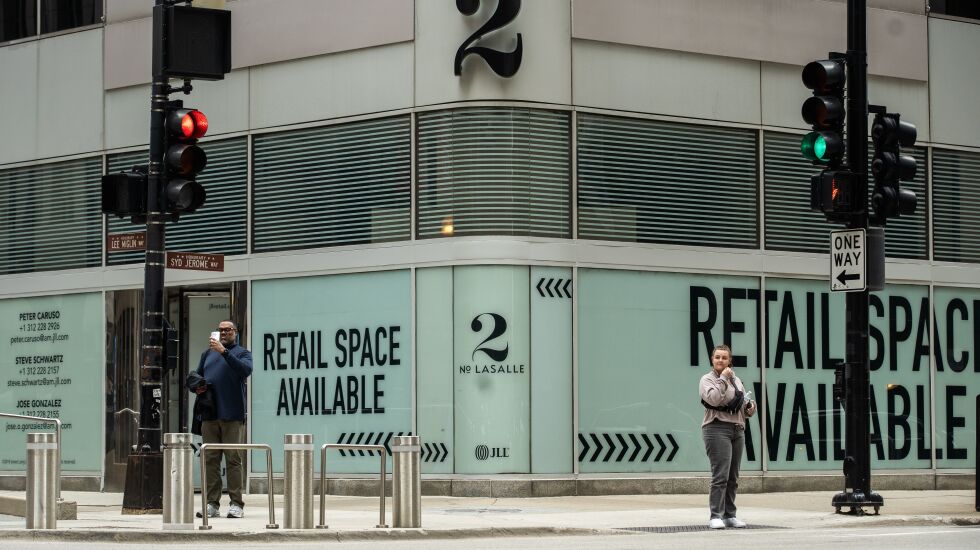
Chicago’s La Salle Street, a distinguished corridor suffering from high commercial vacancies, could be energized by converting some classic buildings to residential use, with an emphasis on affordable units, city officials say in a document issued Monday.
Called an “invitation for proposals,” the planning document amounts to a bold nudge to building owners along and near the street to consider residential conversions and other fresh uses that would bring life to the historic street. For landlords willing to take the chance, the city is dangling financial incentives for the work, including tax-increment financing.
Maurice Cox, commissioner of the Chicago Department of Planning and Development, said the key to reviving La Salle is ending its “monoculture” of offices that mostly empty out after 5 p.m. The pandemic and its change in work habits dealt a hard blow to the street, while some of its largest employers have relocated to state-of-the-art high-rises downtown.
“If we were to do nothing, we would probably see the future of La Salle as a high-end residential street. We see a real opportunity as a mixed-income, mixed-use residential street,” Cox said.
His department said the stretch along and near La Salle, running from Wacker Drive south to Jackson Boulevard, could accommodate 1,000 units, 300 of them priced for people with low or moderate incomes, as defined by city rules.
“There is nearly 5 million square feet of vacant commercial space on the La Salle Street corridor but not a single unit of affordable housing,” Mayor Lori Lightfoot said in a statement accompanying the document, called “La Salle Street Reimagined.”
“Diversifying this corridor is an essential component in our strategy to restore La Salle’s vitality, create more neighborhood-serving retail, and foster a more inviting pedestrian environment in the heart of the Loop that will benefit all Chicagoans,” the mayor says in the statement.
Property owners could ignore the city’s call and pursue redevelopment on their own. But for those willing to play by the city’s proposed rules, incentives could include help from a TIF district that is among the most cash-rich in the city. The historic street is part of the La Salle Central TIF district, in which a portion of property taxes has been set aside for public improvements.
The district’s last reported balance at the end of 2021 was almost $197 million.
An array of other help is available, including tax credits for affordable housing and for improving historic buildings. Cox said help also could come from the city’s Small Business Improvement Fund. His agency wants development proposals submitted by Dec. 23.
Market studies show the La Salle area is suffering vacancy rates higher than any other part of downtown, about 26% for office space and 36% for the retail space.

The city’s report builds on research issued in March by the Urban Land Institute Chicago, a study group of private and public sector experts. It called for redevelopment of the historic street that would create more activity night and day.
City officials said 59% of the buildings on the La Salle corridor predate 1940. Classical and Art Deco architecture dominate the streetscape, with many buildings either official landmarks or contributing elements toward La Salle’s listing on the National Register of Historic Places.
Cox hopes the city can build on the biggest win lately for the corridor — Google’s decision to buy from the state and occupy all of the Thompson Center at Randolph Street and La Salle. As part of that deal, the state is buying the former BMO Harris Bank building at 115 S. La Salle and will consolidate about 1,800 employees there.
Office life will remain in La Salle’s future, Cox said. But he said residential growth will create more commercial activity. A 1902 building at 29 S. La Salle, a former home of law firms, already has been converted into high-end apartments.
Cox also said festivals and events should show off the architecture and grand lobbies. “La Salle and its historic buildings create a pretty singular backdrop for what could be dynamic event space,” he said.
At the south end of La Salle is one of its main features, the Chicago Board of Trade Building at 141 W. Jackson, topped by a statue of Ceres, the goddess of grain. But the building is a symbol of the street’s problems.
Traders used to flock there by the thousands, but now the old trading floor, just east of the landmark building, is obsolete. Five stories tall, the old floor has been sold to ComEd to become a substation powering downtown but containing far fewer jobs.
Asked if that sale represented a setback for the street, Cox said, “I only see opportunities here. There’s a bit of embarrassment of riches along La Salle.”
The city provided a statement from downtown Ald. Brendan Reilly (42nd) supporting the city’s call for La Salle ideas.
“This is a major step in helping revitalize an important corridor in Chicago’s Central Business District,” Reilly said. “I look forward to reviewing the final proposals and working alongside Mayor Lightfoot to reinvigorate and redevelop the heart of Chicago’s economic engine.”








